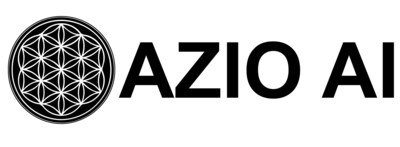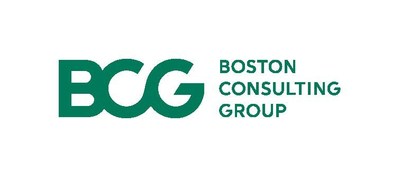Global Self-Healing Materials Market 2023-2028F – Rising Demand for Durable and Reliable Materials and Technological Advancements are Driving Market Growth
Press Releases
Jul 18, 2023
DUBLIN, July 17, 2023 /PRNewswire/ — The “Self-Healing Materials Market – Global Industry Size, Share, Trends, Opportunity, and Forecast, 2018-2028F Segmented By Form (Extrinsic and Intrinsic), By Material Type (Polymer, Concrete, Coatings, Others) By End Use, By Region and By Competition” report has been added to ResearchAndMarkets.com’s offering.

Global Self-Healing Materials market was valued at USD 1.53 billion in 2022 and is anticipated to project robust growth in the forecast period with a CAGR of 9.16%, owing to increasing demand from the construction industry and supportive government policies.
The materials science and engineering field has witnessed groundbreaking advancements in the development of self-healing materials. These remarkable materials possess the ability to autonomously repair the damage inflicted upon them, mimicking the regenerative capabilities found in living organisms.
Self-healing materials have the potential to revolutionize numerous industries, including aerospace, automotive, electronics, and healthcare. Self-healing materials refer to a class of substances that possess the capability to repair damage, such as cracks, scratches, or structural flaws, without the need for external intervention.
These materials can detect and respond to damage, initiating a repair process that restores their integrity and functionality. The key driving force behind self-healing materials is the incorporation of microcapsules, vascular networks, or reversible chemical bonds within the material’s structure.
Self-healing materials represent a remarkable technological breakthrough with significant potential across various industries. From enhanced safety and durability in aerospace and automotive applications to improved reliability in electronics and advancements in healthcare, these materials have the power to reshape our world.
Self-healing polymers often contain tiny microcapsules filled with healing agents. When a crack or damage occurs, the capsule ruptures, releasing the healing agents into the damaged area. These agents then react with each other or with the material, forming a solid, polymerized bond that closes the crack.
Advances in nanotechnology and materials science will pave the way for the development of new healing mechanisms and materials. Integration of smart sensors and artificial intelligence will enable materials to detect and repair damage in real-time. Self-healing materials may contribute to the development of sustainable and circular manufacturing processes, by reducing waste and extending product lifecycles.
Global self-healing materials market has witnessed significant growth in recent years, driven by advancements in materials science, increasing demand for durable and sustainable materials, and expanding applications across various industries. Self-healing materials have the remarkable ability to autonomously repair damage, leading to improved performance, reduced maintenance costs, and extended product lifecycles.
Global Self-healing Materials market has been experiencing steady growth, and its value is expected to reach billions of dollars in the coming years. The market growth can be attributed to several factors, including increasing investment in research and development, rising demand for advanced materials in key industries, and growing environmental concerns driving the need for sustainable solutions.
Rising Demand for Durable and Reliable Materials and Technological Advancements are Driving Market Growth
The continuous evolution of materials science, nanotechnology, and polymer chemistry has revolutionized the development of self-healing materials. New healing mechanisms, such as microcapsules, vascular networks, and reversible chemical bonds, have expanded the capabilities of self-healing materials.
These mechanisms enable materials to detect and respond to damage, initiating a healing process that restores their integrity. Nature-inspired self-healing materials mimic biological systems and processes, leveraging concepts like wound healing in living organisms. These bioinspired materials offer unique healing properties and improved performance, driving further research and development in the field.
Industries such as aerospace, automotive, electronics, and infrastructure are increasingly seeking materials that exhibit enhanced durability, reliability, and performance. Self-healing materials offer a compelling solution to these demands. The ability of self-healing materials to autonomously repair damage helps extend the lifespan of products, reducing the need for frequent replacements and associated costs.
Self-healing materials can repair cracks, scratches, and other structural flaws, minimizing the risk of catastrophic failures and enhancing safety in critical applications. By autonomously repairing damage, self-healing materials reduce maintenance requirements and associated expenses, making them an attractive choice for industries with high maintenance costs.
Increase in Investments and Favourable Government Policies are Driving Global Self-Healing Materials Market
The increasing investments in research and development on self-healing materials are driving the growth of the market. Manufacturers are developing new and innovative products to meet the specific requirements of various end-use.
The demand for advanced self-repairing polymers is increasing in various end-use industries, such as automotive, transportation, and electronics. Self-healing materials can repair damages caused by mechanical friction and restore functionalities at microscopic levels without any human intervention. Self-healing materials can help to extend the lifespan of products, which can lead to a reduction in maintenance costs.
This is important in industries where downtime can be costly, such as the automotive and aerospace industries. Favorable governmental trade policies support the growth and development of self-healing materials. The implementation of sophisticated expertise that supports the expansion of the product portfolio is likely to expand the self-healing materials market size.
Major Challenges Faced by Global Self-Healing Materials Market
Manufacturing self-healing materials often involve complex processes and specialized technologies, resulting in higher production costs. To ensure widespread adoption, efforts should be directed toward optimizing production methods, streamlining manufacturing processes, and leveraging economies of scale to reduce costs.
The lack of standardized testing procedures and quality control protocols poses a challenge to the market. The reliability and performance of self-healing materials need to be thoroughly assessed and validated to instill confidence among end-users. Establishing industry-wide standards, guidelines, and certification programs will be crucial to ensure consistent quality and promote market acceptance.
Integrating self-healing mechanisms into existing materials and manufacturing processes presents a challenge. Industries often have established materials and manufacturing methods, making it challenging to incorporate self-healing capabilities without disrupting existing operations. Collaboration between material scientists, engineers, and manufacturers is essential to develop seamless integration strategies, enabling the adoption of self-healing materials without significant process overhauls.
While self-healing materials exhibit impressive capabilities, achieving optimal healing efficiency and speed remains a challenge. The healing process should be fast, reliable, and capable of repairing various types of damage, including cracks, scratches, and structural flaws. Research efforts should focus on enhancing healing mechanisms, developing more efficient healing agents, and optimizing the overall healing process to minimize downtime and improve performance.
Ensuring the long-term durability and effectiveness of self-healing materials is another challenge. The materials must maintain their healing properties over extended periods, resist degradation, and withstand harsh environmental conditions. Long-term testing and durability studies are essential to validate the performance and stability of self-healing materials, providing confidence in their long-term reliability.
Competitive Landscape
Company Profiles: Detailed analysis of the major companies present in Global Self-Healing Materials market.
- BASF SE
- The Dow Chemicals Company
- Wacker Chemie AG
- Covestro AG
- Huntsman International LLC
- NEI Corporation
- CompPair Technologies Ltd.
- Green-Basilisk BV
- Autonomic Materials, Inc.
- Applied Thin Films Inc.
- Acciona, S.A
- Evonik Industries AG
- Sensor Coating System Limited
Report Scope:
Self-Healing Materials Market, By Form:
- Extrinsic
- Intrinsic
Self-Healing Materials Market, By Material Type:
- Polymer
- Concrete
- Coatings
- Other
Self-Healing Materials Market, By End-Use:
- Building & Construction
- Mobile Devices
- Transportation
- Others
Self-Healing Materials Market, By Region:
- Europe
- Germany
- France
- United Kingdom
- Russia
- Italy
- Spain
- Rest of Europe
- North America
- United States
- Mexico
- Canada
- Asia Pacific
- China
- India
- Japan
- Australia
- South Korea
- Malaysia
- Rest of Asia Pacific
- Middle East & Africa
- Saudi Arabia
- South Africa
- UAE
- Rest of Middle East & Africa
- South America
- Brazil
- Argentina
- Rest of South America
For more information about this report visit https://www.researchandmarkets.com/r/77i96j
About ResearchAndMarkets.com
ResearchAndMarkets.com is the world’s leading source for international market research reports and market data. We provide you with the latest data on international and regional markets, key industries, the top companies, new products and the latest trends.
Media Contact:
Research and Markets
Laura Wood, Senior Manager
[email protected]
For E.S.T Office Hours Call +1-917-300-0470
For U.S./CAN Toll Free Call +1-800-526-8630
For GMT Office Hours Call +353-1-416-8900
U.S. Fax: 646-607-1907
Fax (outside U.S.): +353-1-481-1716
Logo: https://mma.prnewswire.com/media/539438/Research_and_Markets_Logo.jpg
SOURCE Research and Markets




